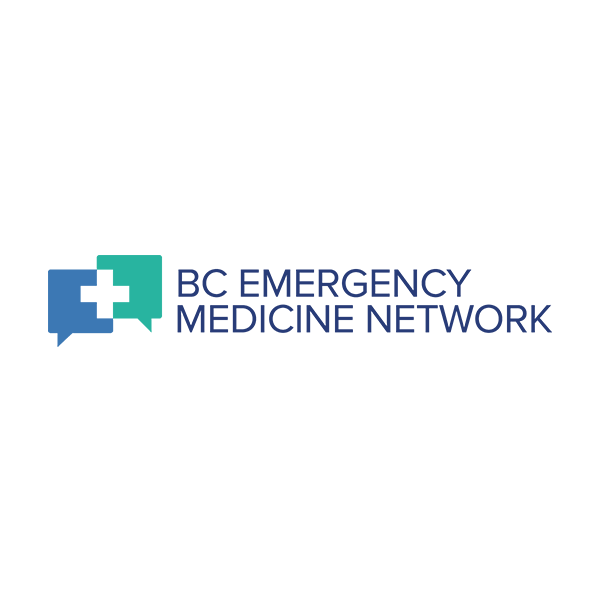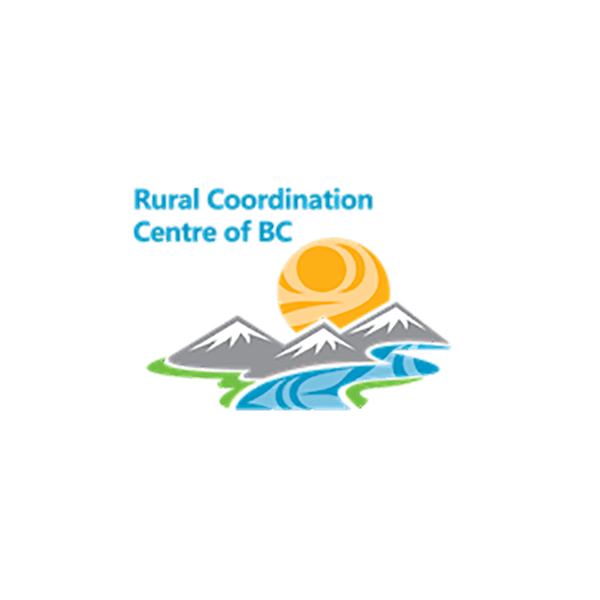BC Smart Access to Guide Emergency care

The BC Smart Access to Guide Emergency Care (SAGE) is a result of a collaboration between the Rural Coordination Centre of British Columbia (RCCbc), the BC Emergency Medicine Network, and the UBC Cloud Innovation Centre. The purpose of SAGE BC is to provide emergency workers with important logistical, medical, and regional information when treating and transporting individuals in rural BC communities. This repository allows healthcare services in these communities to be delivered in a more efficient and time-effective manner.
Overview
The SAGE BC repository is compiled by collecting information about the availability of equipment, supplies and personnel in each rural health site. This data is collected from healthcare systems, hospitals, and members of the healthcare community. It is then uploaded into a user-friendly directory which can be accessed quickly and easily by healthcare staff in an emergency situation.
Today, BC healthcare providers dispatched to rural communities are impeded in their ability to deliver care by a lack of regional and logistical context. During an emergent medical situation, healthcare workers in remote settings have to manually curate information about local resources available and external factors, such as transportation options and weather conditions. This is a lengthy process which burdens healthcare workers by drawing them away from their most pressing and important tasks. As a result, healthcare services are not delivered in the most effective and efficient manner. By removing this barrier to fast and effective treatment, SAGE BC seeks to improve the quality of care delivered to rural communities.
Approach
SAGE BC’s repository is built by aggregating information about the 181 rural community health units in the province. The tool provides an easy interface into which the rural community members can enter their local knowledge, and allows them to override any inaccurate information that may be provided by external sources. SAGE BC then provides a dashboard for healthcare workers outside that community, and allows them to easily and efficiently access the information they need about the medical unit and the surrounding area. The collaboration between both rural residents and urban healthcare workers allows all parties to have a strong understanding of both the local region as well as the emerging medical situation.
Supporting Artifacts
During the Innovation Workshop, a fictional Press Release and nonfictional Frequently Asked Questions are drafted. This is a tool that is used to define the solution and why it matters to the customer. The Storyboard is a series of frames designed to illustrate the problem and the impact of the solution visually.
Press Release
BC improves the delivery of Rural Emergency Healthcare
FAQs
Customer FAQs (rural healthcare professionals):
Q: What kind of training will I need to use this tool?
A: SAGE is designed with a user-friendly interface. It is built on wiki functionality which allows anyone who has editing access to quickly and easily input text information into the tool.
Q: Who will maintain and update this tool?
A: RCCbc will provide technical support, but the updating of information will be the responsibility of the community of users. The more the tool is used, accessed and updated, the more useful it will be to everyone in the health care system who is using it.
Q: Who is ultimately responsible for maintaining the information on SAGE?
Each health site will assign one Local Administrator as the ‘owner’ for their page in the SAGE tool, however multiple stakeholders may have access to the tool and be able to edit it.
Q: I do not have editing access to SAGE, but I have some suggestions for content. Who should I contact?
A: The information for each health site’s Local Administrator will be posted at the top of the page, so you are able to connect with that person to suggest content.
Q: Is SAGE a public or private resource?
A: SAGE is currently set to be access-only, so it is not publicly available. The tool is flexible and able to be adjusted according to the needs of the users.
Q: How will I find the information I need when there are so many rural health centers in the province? Won’t it be information overload?
A: Each rural health site will have its own page so that information is contextualized by the people in that region, for that region. There will be quick links within each page so that you can quickly scroll to the section of the tool you would like to access.
Q: What happens when the local knowledge that I have contradicts with the info in the tool? Whom do I contact when information needs to be changed?
A: The directory contains edit history. If you find contradicting information, please reach out to the appropriate person who entered it for clarification. You can also connect with the Local Administrator if you have questions about content.
Q: How will this make virtual collaboration more efficient?
A: Relevant emergency information will be available on the directory. During emergency situations, healthcare providers can rely on this information without looking in multiple places or asking for it from the rural health team, thus reducing time spent on searching for information and more time for patient care.
Q: While making updates, I accidentally deleted something. How do I get it back?
A: Content can be rolled back into previous versions using the History of Edits; there users can choose a range of versions that a page can be reverted to.
Stakeholder FAQs (urban healthcare professionals, mgmt, administration, IT):
Q: How much will it cost to run the tool?
A: The total cost is estimated to be $70.00 per month. On an AWS savings plan, the price decreases to approximately $50.00 per month.
Q: How has the definition of services, supplies, equipment been determined? How do we ensure that we are using a common set of terms?
A: The definitions were provided by RCCbc and the BC EMN to ensure consistency in SAGE. Users have the ability to add to or edit the current terms and definitions to ensure that they are accurately representing their health site.
Q: Like all wikis, how do we know this information is accurate?
A: The rural health site itself will decide who has the ability to edit the page. Some users may have ‘view only’ access, and others will have the ability to update and change the content. There is also an activity log built into the tool which allows viewers to see who made updates and when they made them so that they can verify any information that they suspect is incorrect or out of date.
Q: Is there any Personally Identifiable Information (PII) collected or stored by using this tool?
A: The tool does not collect or store any PII.
Visuals
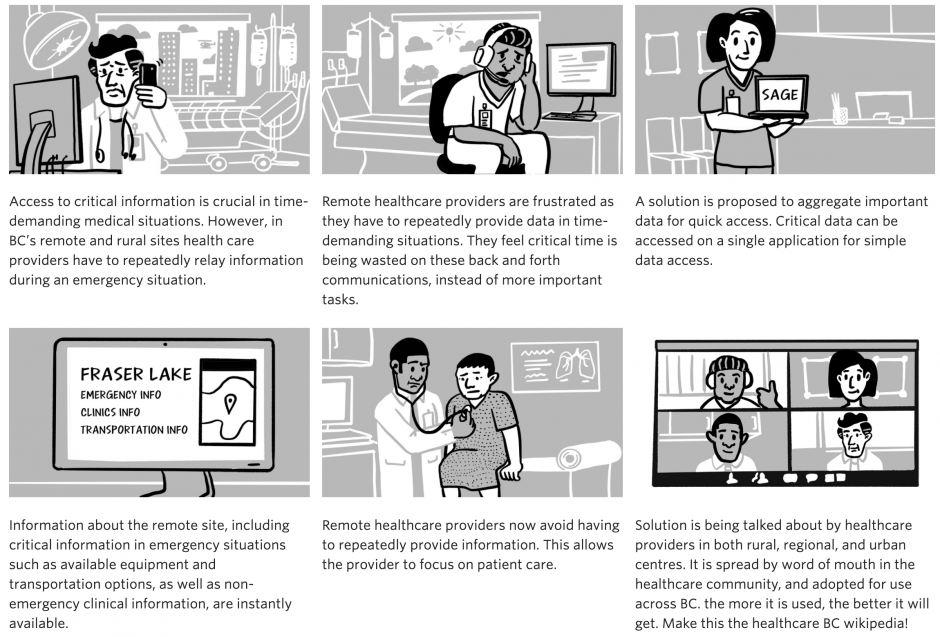
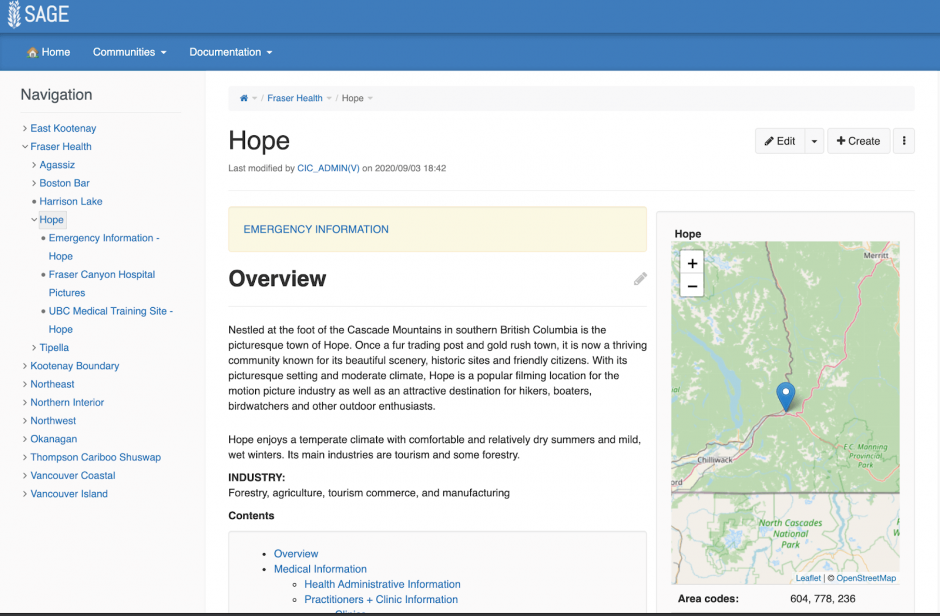
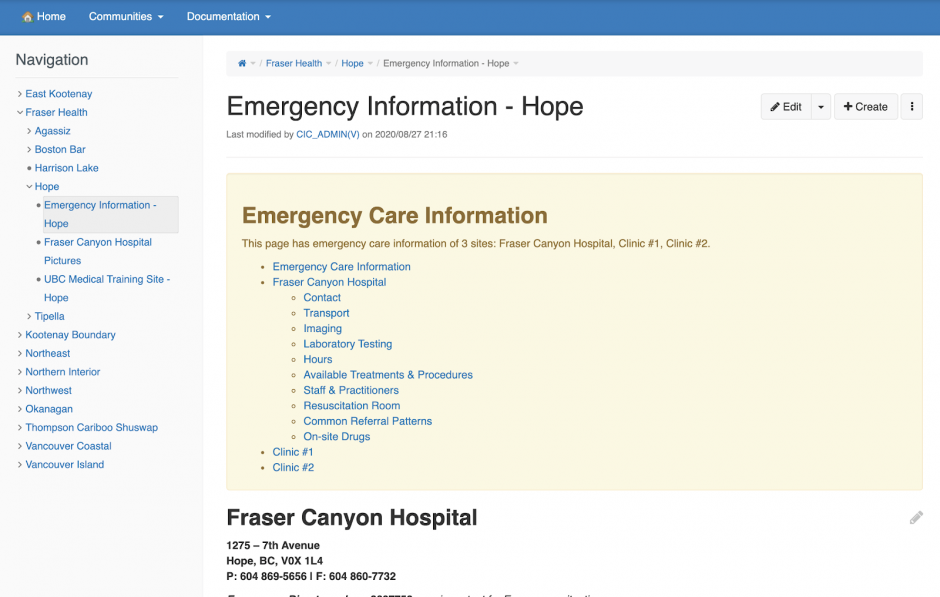
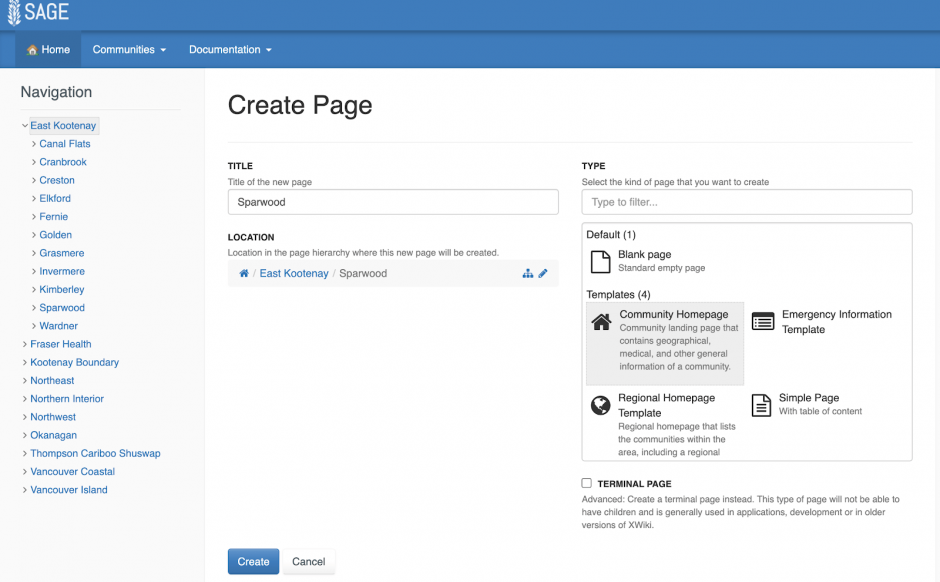
Acknowledgements
Photo Credit – “439 Helo off to Haiti” by ~Alex the Cat~ is licensed under CC BY-NC-ND 2.0.
About the University of British Columbia Cloud Innovation Centre (UBC CIC)
The UBC CIC is a public-private collaboration between UBC and Amazon. A CIC identifies digital transformation challenges, the problems or opportunities that matter to the community, and provides subject matter expertise and CIC leadership.
Using Amazon’s innovation methodology, dedicated UBC and Amazon CIC staff work with students, staff and faculty, as well as community, government or not-for-profit organizations to define challenges, to engage with subject matter experts, to identify a solution, and to build a Proof of Concept (PoC). Through co-op and work-integrated learning, students also have an opportunity to learn new skills which they will later be able to apply in the workforce.

